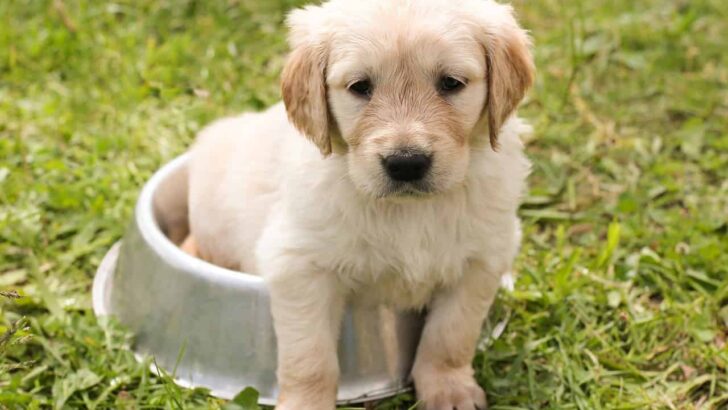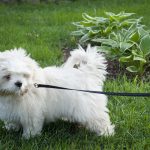- Nom Nom Dog Food Subscription Review - November 7, 2023
- 7 Best Dog Bed Ideas For Great Dane (DIY Options) - July 16, 2022
- Top 5 Rated Best Non-Prescription Diabetic Dog Food - July 15, 2022
You know it’s true love when you’re ready to wade through practically a moat of urine about it. I commend your commitment to new puppy companionship! With a few things done right, you’ll have a long life ahead of you with your furry friend. First, however, you’ve got to teach it how to pee.
Perhaps more specifically, you have to teach it where and when to pee. It’s got the pee part down pat. Your puppy is a peeing machine!
So unless you want to spend the next 15 years cleaning up after your dog, here are 7 things you must know about potty training a puppy.
1. It’s Okay To Buy Some Help
You can do this the hard, old fashioned way or you can let technology and commerce lend a helping hand. Either way is fine. The first just requires a little more elbow grease.
If you’re going the way of the new fangled crazy kids, here is a shopping list of things you’ll need to potty train your puppy. You may also consider dog potty training classes. Do whatever feels comfortable for you, but do settle on some kind of structure or method.
Puppy Pads
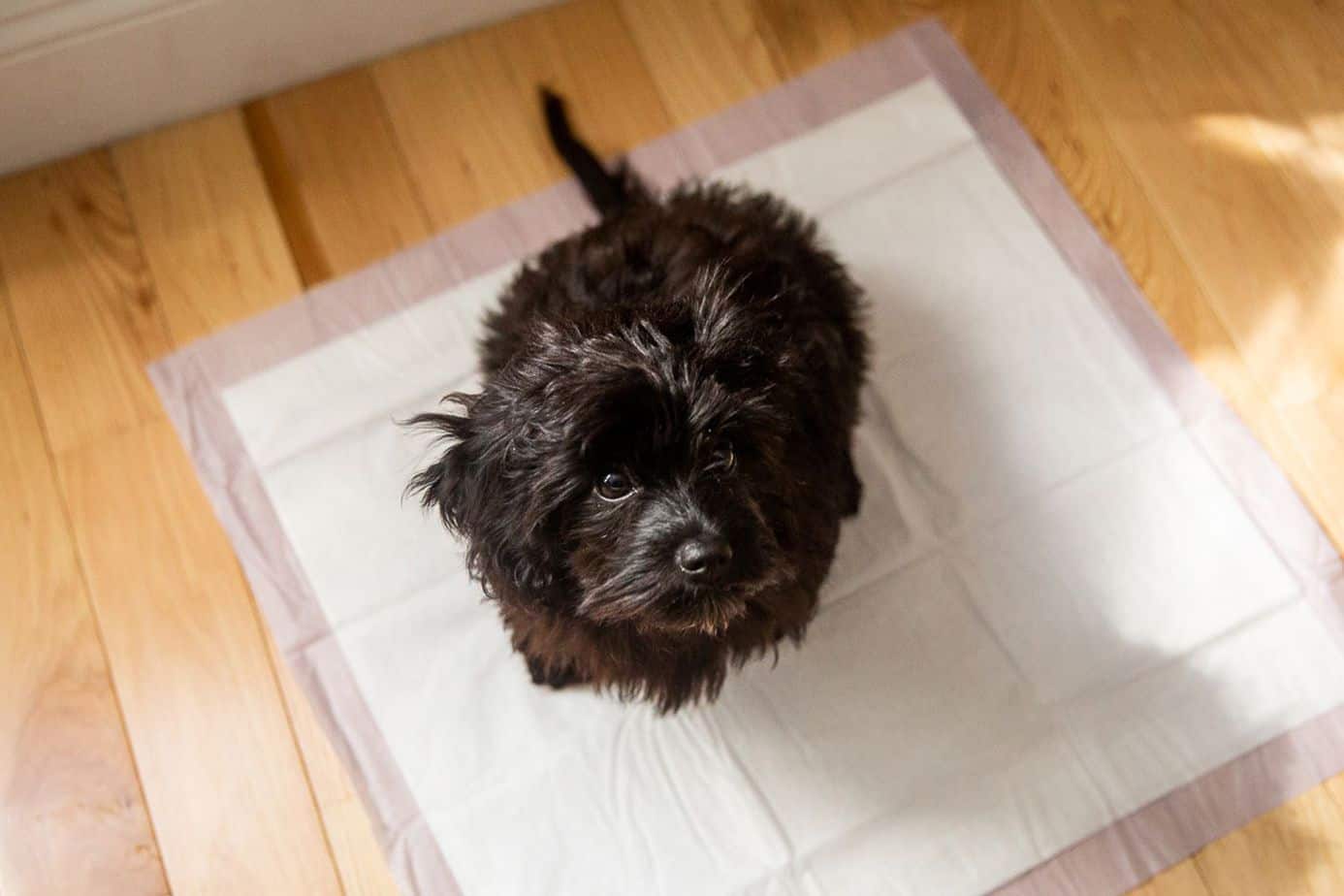
Puppy pads come in many shapes, sizes, and materials. For instance, the Top Dog Deluxe pads contain black carbon technology to keep odor away. Customers rate them highly overall, maybe because the pheromones that are in the pads attract doggie noses. They absorb a lot of liquid fast, too.
If you’d like to spend a little less on a reliable, cheap puppy pad, Amazon’s own puppy pads, AmazonBasic, are also well loved. They work great, are easy to scoop up and toss away, and liquid turns to gel once it hits the core. To further protect against spilling, there is a boarder on the pad.
Step outside the box with a little potty turf. These setups are sometimes called training pads, but they’re real grass or synthetic turf that looks like grass. There are some mixed reviews on this type of puppy training, but it certainly helps young dogs understand they’ll be going on the grass, not newspaper or pads indefinitely.
Some of the highest rated grass and turf pads are Fresh Patch and PetMaker.
So far, we’ve been talking about the bladder, but the real way to your puppy’s successful potty training may be through the stomach.
Treats
It’s essential to pick a healthy treat to use as a reward during potty training. You want to feel empowered to reinforce all behavior you like. Experts recommend that only 10% of a dog’s total daily calorie intake should come from treats, so use that as a guide as you go.
If you love DIY, why not make your own dog cookies? You can control all of the ingredients so you know exactly what you are feeding your puppy.
Most whole foods can be safely fed to dogs with the exception of:
- Grapes
- Raisins
- Tomatoes (bad in excess)
- Chocolate
- Some nuts – you have to check and see.
This is not a comprehensive list, but it’s a good starting point. Always research any new food before you give it to your dog and the best idea is to ask your vet.
You can even use your puppy’s kibble as a training treat. As long as your dog seems pleased to receive the treat and it’s safe, give it a go.
That being said, you can safely feed most dogs some vegetables, too.
Healthy veggie based treats for dogs include:
- Celery cut into small pieces,
- Carrots,
- Cucumbers,
- Green beans, and
- Peas.
You can also pick up some healthy dog treats online. The Probiotic Dog Treats by Buddy & Iola have nutritional benefits for your dog to help support his immune system.
Rocco & Roxie Gourmet Jerky Dog Treats are USDA organic certified. They’re made of slow smoked meat and don’t contain any soy, wheat, corn, or gluten. Cut them up into small, bite sized pieces for your puppy. You’ll stretch your dollar and train your puppy without putting weight on him.
A Clicker
I’m going to go into detail in the next section about using a clicker to potty train your dog. For now, I just want it included in this must have list.
The clickers are all pretty similar, and any one will do. Try the Big Button clicker or the A&S Creavention PetClicker if you need a little inspiration.
You can usually pick up cheap clickers for training in the checkout of your local pet supply store, as well.
A Suitable Dog Crate
Crating your dog can feel mean, but it really caters to a dog’s natural behavior. It is perfectly okay and even beneficial to crate your dog in a humane and fair way.
The size crate you need will change as the puppy goes, so look for quality crates at good prices to minimize the cost of giving your dog his own tiny house. They’re all the rage, after all.
If you’re okay with doing some cleaning up after your puppy, you can get by on some old towels, newspapers, a crate and a healthy, tasty treat.
2. Go For The Clicker
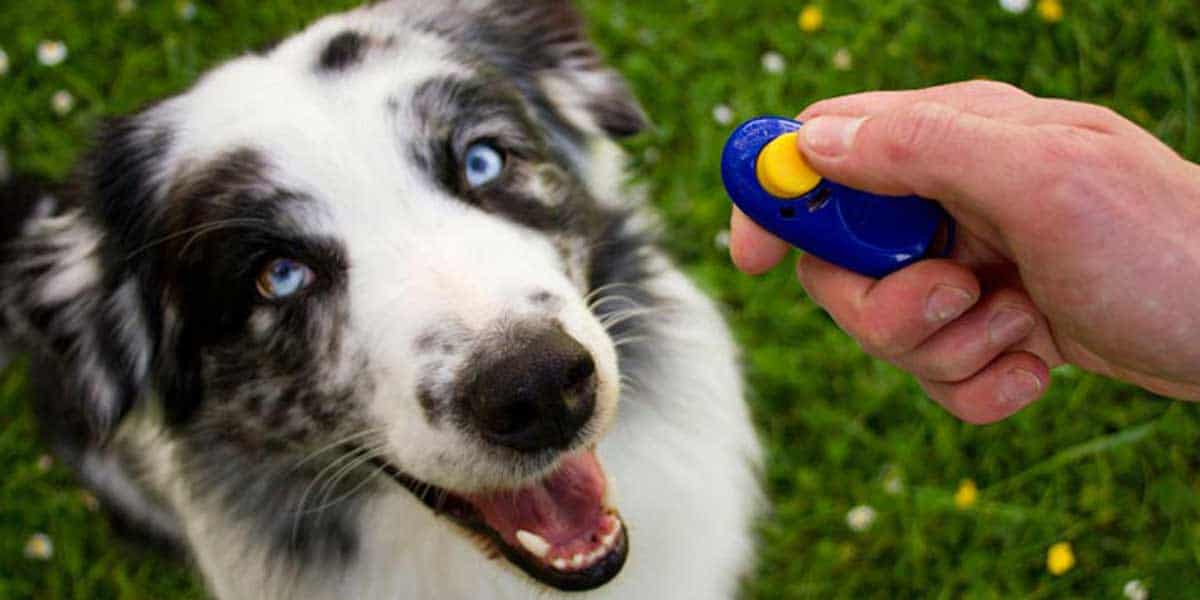
Clicker training is awesome. First of all, once your pet masters it, it works as a bridge technology to clue your dog in on exactly what you want. It isn’t quite like dog/human translation, but it’s close. A clicker trained dog can be taught a variety of other tricks and obedience commands.
So, clicker training is a system and each new task or trick is like a booster pack.
I strongly recommend incorporating the clicker into your puppy potty training schedule.
Clicker Training Basics
There are many guides to clicker training your dog online. I’ll just cover the basics here.
Charging or Conditioning The Clicker
Charging the clicker is really the process of conditioning your puppy to associate the clicker with a reward. This teaches the dog that the click has meaning. It indicates he should, at least, pay attention. At best, it will direct him toward an action.
The good news is, charging the clicker is really easy. There are only two objectives: click and treat.
Here’s how to do it in a few easy steps:
- Get some treats, preferably in a bowl so your dog can see them, but not reach them.
- Have your clicker handy.
- Click the clicker and immediately give your dog a treat.
- Repeat this 20-30 times, which is a ‘session’ of training.
- Repeat this whole process up to two times a day for 2-5 days, however long it takes your dog to get the connection.
When you feel your dog relates the click to the treat, it’s time to test him.
Here is how to perform the test:
- Get some treats, but hide them this time. Your pocket is a good spot to put them.
- Move your dog to a different area of the house from where your training normally happens.
- Click the clicker and watch closely for your puppy’s reaction. If he is catching on, he’ll seem excited and be looking for the treat. Just be sure to hand it over as soon as you can so you continue to reinforce the click = treat relationship.
If your dog doesn’t react at all, go back to step one of charging the clicker and repeat all of the steps until your dog seems to be with the program.
When your puppy understands what the clicker represents, you can move on to applying it to housetraining your puppy.
One more thing you should also do before embarking on this training method (pun intended!) is to clean your home very well if your puppy has already had an accident in it. I have some tips on cleaning products coming up, but you can skip them if your home is clear of puppy pee.
The reason you need a clean slate before retraining your puppy is the smell factor. It will be much harder to teach your dog not to pee in the house if he can smell areas he has marked before.
How To Potty Train Your Puppy Using The Clicker Method
Once all that’s done, here is how to approach potty training your dog with the clicker.
Some trainers suggest spending a little time outside with your dog after they go, so the outdoor loving pup doesn’t feel like he is being punished for going by heading back inside immediately.
- As with other potty training methods, keep track of your dog’s need to go. Try to beat them to it by taking them outside for a potty break every 15 minutes, half hour, or whenever it seems natural for your dog to have the urge.
- Keeping your dog tethered to you by way of a leash clipped to your belt will help you spot behavior they exhibit right before they eliminate. As soon as you see this signaling behavior, use your special ‘potty word’ or phrase. This can be as simple as ‘go pee’ but should be specific to potty time and something you don’t mind repeating in public.
- Pick a preferred potty spot and direct your dog there as you leave the house. The environment should help signal to your dog that it’s business time.
- Keep the treats hidden from your dog during the potty break and only offer one to reward behavior.
- As soon as your dog is done eliminating, click your clicker and offer a treat. Don’t interrupt your dog when he starts to go, however, or you could distract him from his business while he clamors for the treat he knows is coming.
- Alternate periods of time in the crate with potty breaks and don’t leave your dog unattended in the house unless he is in the crate. This will cut down on accidents significantly.
To recap, you will say your potty word or phrase to your dog as soon as it signals elimination. Some dogs spin in circles or squat- you’ll pick up on your dog’s signal. As soon as the dog is done, click and offer one treat.
How To Potty Train A Puppy With Pads, No Clicker Method
Maybe you don’t want to bother with the clicker, and that’s okay. Here is how to potty train a puppy with pads.
- This method also requires an eagle eye on your puppy. Be sure you’re ready to crate the dog whenever you aren’t actively watching him.
- Pick a spot for the puppy pad and be consistent- don’t move it during training!
- Your puppy will need to eliminate about every 15 minutes, first thing in the morning, whenever it comes out of the crate, shortly after eating, and before bed. Be diligent about bringing the puppy to the pad at these times.
- A timer can really help you track time during periods when your puppy is playing outside of the crate.
- As I mentioned in the clicker training section, your dog will signal right before he eliminates. Look for this signal (spinning, squatting, sniffing) and use your potty word or phrase as soon as you see it.
- As soon as your dog is done going, give him a treat as a reward. Use a phrase praising your dog also. This will help even if you don’t have a treat later down the road. After all, you’ll eventually eliminate giving your dog a treat every time he goes potty.
- When you’re ready to transition the puppy from peeing on the pad to peeing outside, move the pad! Do this gradually in increments getting closer and closer to the door, then onto the porch or sidewalk, then the lawn. It’s a great idea to pick a potty spot and be consistent about it.
About that consistency: it’s essential.
3. Your Consistency Is The Key
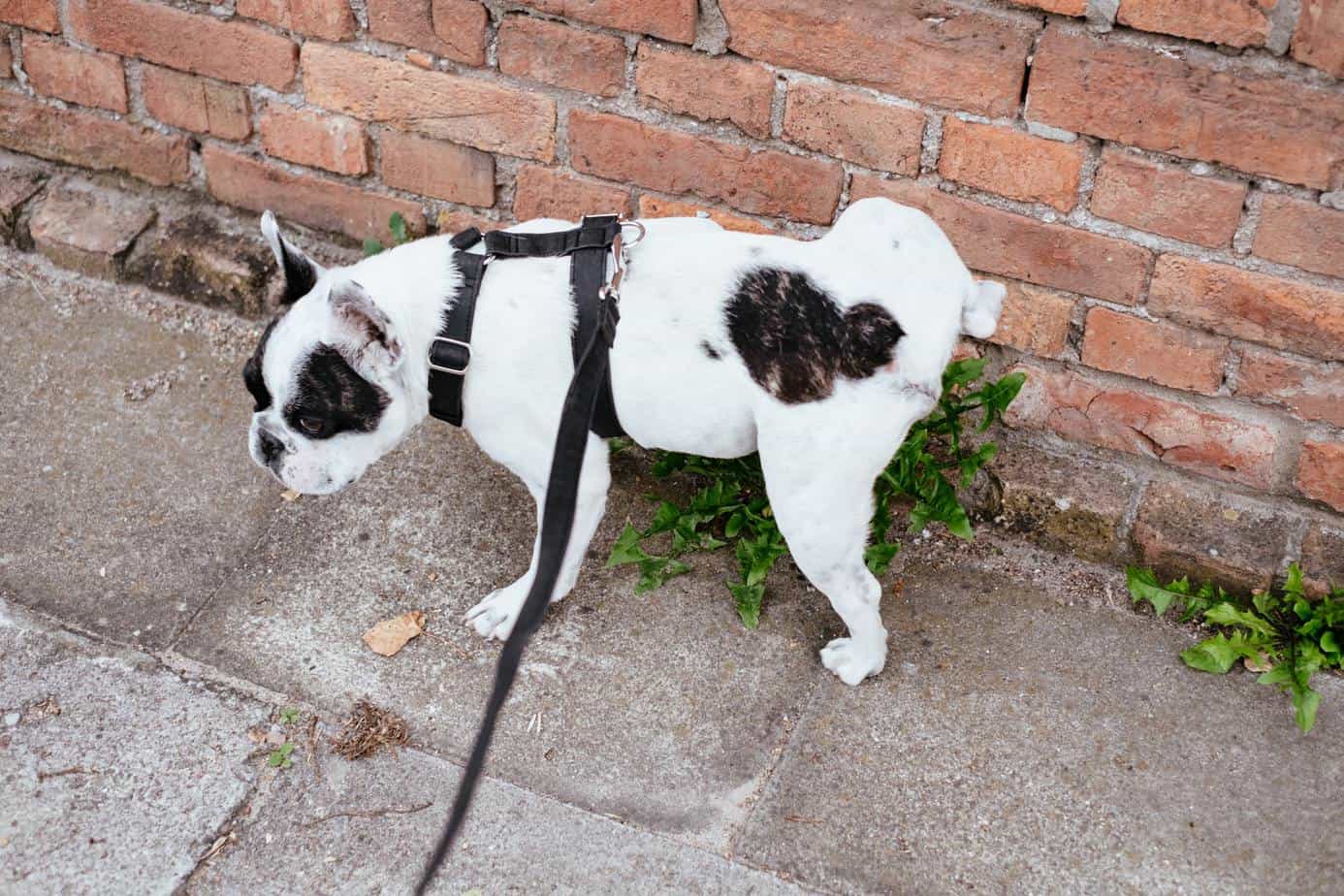
Potty training isn’t easy, but it is basic. You need to communicate to your dog that you are the boss and that you demand Fifi piddle out of doors. You must be firm and consistent. It’s pretty much the hardest thing ever, since your puppy is the cutest thing ever.
Somewhere, a diagram exists showing the direct correlation between puppy cuteness and how difficult it is to be stern with them.
If you aren’t consistent, stern, and businesslike about potty training, you won’t ever know the joys of understanding how to potty train a dog fast.
Remember that part of bonding with your dog is gently but firmly showing him who is the boss. Of course, other times you’ll cuddle him, praise him and reward him. During training time or whenever you instruct your dog to do something, however, pretend you’re at work and proceed.
Speaking of being the boss…
4. You Have To Be The Boss Of That Fuzzy Mushball of a Puppy
You really have to start establishing dominance early.
That being said, if your dog makes a mistake, ignore it. Negative reinforcement such as yelling at your dog isn’t going to help and can damage your relationship early on.
Let me be very clear. I am in no way suggesting that you ever hit or harm your dog. I don’t want you to be mean to your dog or act in a way that causes the animal to lose trust in you.
When I talk about doggie discipline, I’m talking about fair, calm, stern and level headed correction and direction. If you remember to never reprimand your dog in anger, you’ll be on the right track. Try not to take everything your dog does so personally; he’s learning.
5. You Can Remove The Smell Of Urine
- Don’t bother with ammonia or vinegar, but many people have success with enzyme based cleaners.
How you clean up pet accident spots in your house depends on the surface, but there are some steadfast tips that will help:
- Blot any areas of upholstery or carpet that is soiled before cleaning. Use a paper towel or a sponge to really soak it up.
- Rinse or douse the area with water and blot again until it’s mostly dry. Repeat this as many times as possible before you go crazy.
- If the item is washable, add a pound of baking soda to your wash and air dry if possible. Hot water will also help.
- You may need to rent (or buy) a carpet cleaner. It is especially hard to get the scent out of carpet if there is a padding layer underneath it that is also soiled.
Enzyme Cleaners
Here are a few products that can help you tackle the spot.
If you have a really tough stain, you may need a combination of all of the above methods. The Angry Orange product could be used in conjunction with any of the other cleaning methods. I recommend applying it last, so the orange scent lingers and covers any remaining smell.
Customers report good things about these enzyme based cleaners and they all have high ratings. If one doesn’t work well for you, try another.
6. Visit The Vet
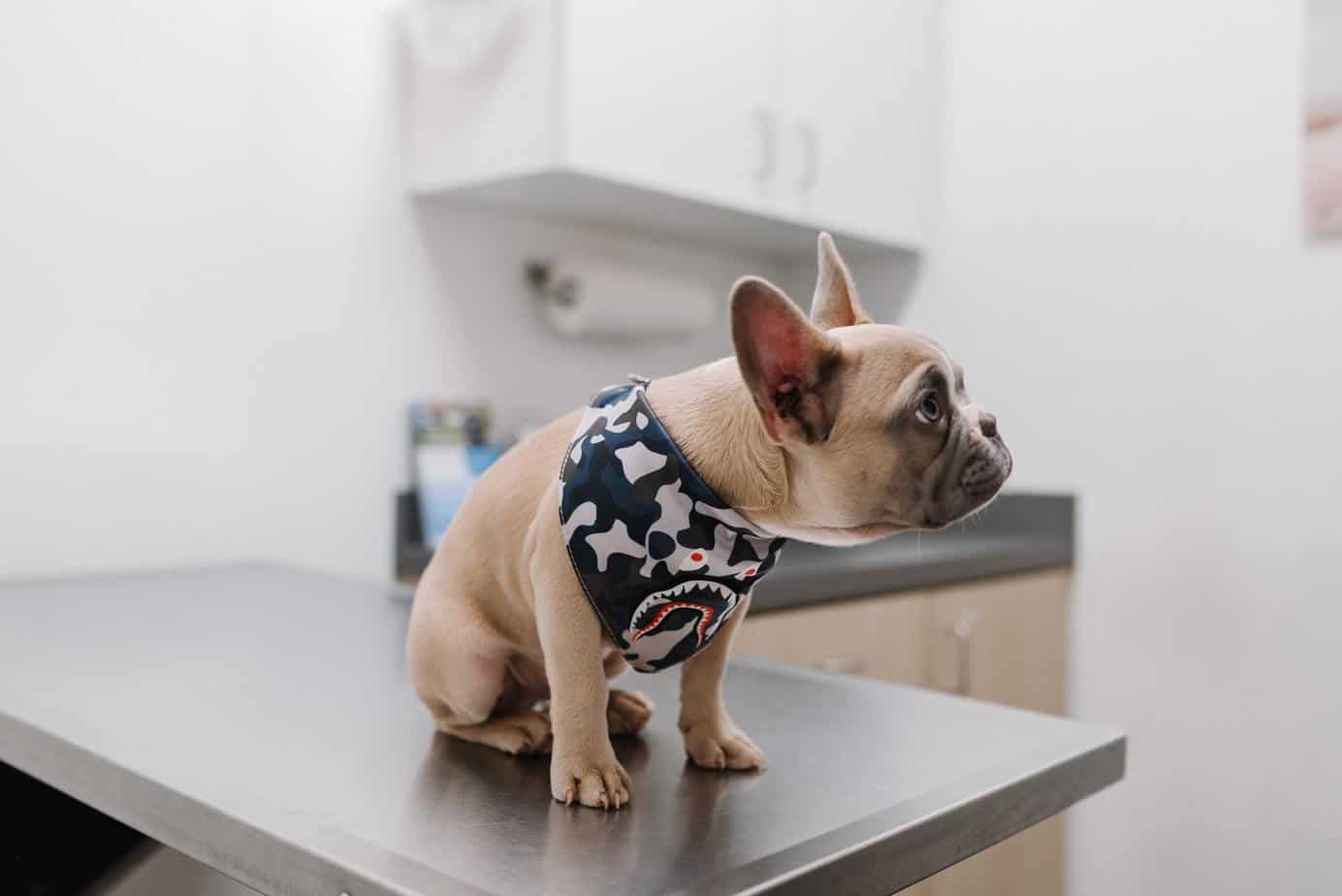
It’s essential to make sure your dog has a clean bill of health early on. This is especially true for anyone who encounters problems potty training their dog. If Mr. Beans isn’t catching on, just make sure there aren’t any infections or issues making his job harder.
Don’t forget that your vet has a literal intellectual ton of information about dog care. You can ask both the vet and members of the staff if they have any tried and true tips on how potty train a puppy to go outside.
If you learn something really great, come back and leave a comment on this post and share it with the group, please!
7. How To Potty Train an Older Dog
Make sure you purchase a crate that is the right size for your older dog. The good news is, you won’t have to size up as he grows.
Potty training an older dog isn’t as hard as you think. Follow the same procedure, either by clicker or with pads, as described earlier for puppies.
Be gentle but firm with your older dog. Praise him when he goes through the right motions.
May The Potty Training Force Be With You And Your Pup!
You’ve got this, puppy potty master! I know that you can do it. If you put in a little time now, you’ll have a much easier relationship with your pet for the rest of your lives.
Thanks for reading and see you again soon.
Here are some key points to remember, regardless of the way you choose to potty train your puppy:
- Be consistent.
- Be patient.
- Be vigilant.
- Get your supplies before you start. This includes cleaners for eventual accidents.
- Do watch your dog closely so you can reinforce positive behaviors he does naturally.
- Don’t reprimand your dog for accidents, just ignore him.
- To click or not to click is up to you.
If you have any additional superstar tips about how to potty train a dog fast, share them with me in the comments, please!
I’d also love to hear from you with questions and potential topics for future posts. I’m here for you, so I want to help with areas you are concerned about.
Continue reading:

